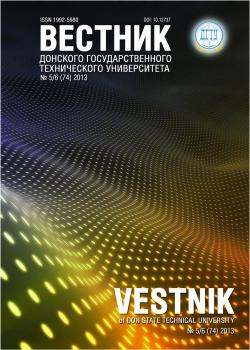Band structure of solid solutions InxGa1-xN with sphalerite struc-ture and with considerable percentage of indium (x = 0.25; 0.5; 0.6; 0.7; 0.75; 0.9; 0.95; 0.97; 0.99; 1,0 ) is calculated using the density-functional theory (DFT) and the cluster version of the local coherent potential method within the frame of the multiple scatter-ing theory. The electron structure of the ternary solutions of InxGa1-xN in sphalerite crystallographic modification is compared; the interpretation of their features is given. The concentration de-pendence on the energy gap for the entire variation range of the indium content in the solution is obtained. The spin polarization effect of the states of In, Ga, and N for the alloys with the consid-erable percentage of In, as well as the transition of the ternary solu-tions of In0.75Ga0.25N into the of magnetic semiconductor state is found out. The magnetic moments of In, Ga, and N atoms, and the saturation magnetization in InxGa1-xN semiconductor system are determined.
band structure, magnetic moment, valence band, band gap, density of electronic states.
The semiconductor solid solutions InxGa1-xN are the most promising materials for optoelectronics to obtain the blue and green light-emitting diodes which are used for high-density optical storage of information and high-power devices, for blue lasers for instance. The extraordinary property of these materials is the ability to operate over a wide temper-ature range and the insensitivity to X-ray irradiation [1, 2]. By varying of the indium percentage one can manage the value of the energy gap in the range from 1.92 eV (c-InN) [3] upto 3.2 eV (c-GaN) [3] that gives the opportunity to use these materials in various parts of spectrum [4, 5]. For the far ultraviolet region (240-300 nм) the semiconductor materials based on InxGa1-xN (0,5< x < 1) crystals are of high interest.
1. Nakamura, S. InGaN-based blue light-emitting diodes and laser diodes. Journal of Crystal Growth, 1999, vol.202, pp. 290-295.
2. Ferhat, M., Bechstedt, F. First-principles calculations of gap bowing in InxGa1-xN and InxAl1-xN alloys: Relation to structural and thermodynamic properties. Physical Review B, 2002, vol. 65, pp. 075213-1 -075213-8.
3. Li, J.B., et al. Cubic InGaN grown by MOCVD. MRS Internet Journal of Nitride Semiconductor Research, 1999, vol. 4S1, G3.25.
4. Krivolapchuk, V.V., Lundin, V.V., Mezdrogina, M.М. The role of inserting electrical fields in the formation of the radiation of quantum wells InGaN/GaN. Fizika Tverdogo Tela, 2005, vol. 47, no. 7, pp. 1338-1342.
5. Ferhat, M., Furthműller, J., Bechstedt, F. Gap bowing and Stokes shift in InxGa1-xN alloys: First-principles stud-ies. Applied Physics Letters, 2002, vol. 80, pp. 1394-1396.
6. Davydov, V.Yu., et al. Band gap of InN and In-rich InxGa1-xN alloys (0.36<x<1). Physica Status Solidi (b), 2002, vol. 230, pp. R4-R6.
7. Soshnikov, I.P., et al. Peculiarities of formation of the radiation of quantum wells. MOCVD. Fiz. Tech. Semi-cond., 2000, vol. 34, pp. 647-651.
8. Martinez-Criado, G., et al. Direct observation of Mn clusters in GaN by X-ray scanning microscopy. Japanese Journal of Applied Physics, 2004, vol. 43, pp. L695-L697.
9. Oestreich, M. Injecting Spin Into Electronics, Nature, www.nature.com. Macmillan Magazines Ltd, 1999, vol.402, pp.735-741.
10. Dietl, T., Ohno, H., Matsukura, F. Hole-mediated ferromagnetism in tetrahedrally coordinated semiconductors. Physical Review B, 2001, vol.63, pp. 195205.
11. Dhar, S., et al. Colossal Magnetic Moment of Gd in GaN. Physical Review Lett., 2005, vol. 94, pp. 037205.
12. Shein, I.R., et al. Magnetization of beryllium oxide in the presence of non-magnetic impurities: Boron, carbon, and nitrogen. JETP Lett., 2007, vol.85, iss. 5, pp. 246-250.
13. Baroni, S., Corso, A. Dal, de Gironcoli, S., et al. http://www.pwscf.org/.
14. Ilyasov, V.V., Zdanova, T.P., Nikiforov, I.Ya. X-ray spectra and electron energy structure of nitrogen into solid solution AlxGa1-xN. Fizika Tverdogo Tela, 2007, vol.49, pp.1369-1372.
15. Perdew, J.P., Burke, S., Ernzerhof, M. Generalized Gradient Approximation Made Simple. Physical Review Lett., 1996, vol. 77, p. 3865.
16. Ilyasov, V.V., Nikiforov, I.Ya., Ilyasov, Yu.V. Ti L-Spectrum XANES and electron structure of the system Ti-Al-C. Journal Physical IV France, 1997, vol.7, pp. 281-282.
17. Mecheryakov, V.F. Crystal field and the magnetization of inclined antiferromagnetic CoCO3. JETP, 2007, vol.132, pp.1138-1151.
18. Hermann, F., Skillman, S. Atomic structure calculations. Prentice-Hall, Inc., Englewood Cliffs (N.J.), 1963.
19. Ilyasov, V.V., Zdanova, T.P., Nikiforov, I.Ya. Electron energy structure and X-ray





